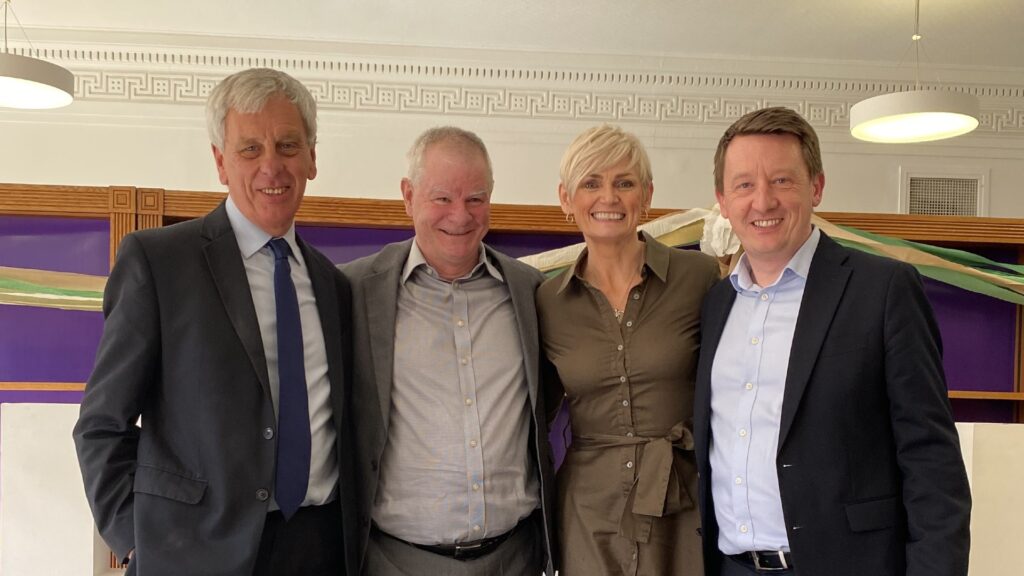Rishi Sunak’s government is attempting to introduce tough new laws that would further limit the right to take industrial action amid continuing strikes in the UK.
This is just the latest in a long line of legislation brought in over the past 50 years that has almost completely eroded such rights. Trade unions were once a major force in British society, but that is no longer the case. Here, a timeline of key events explains how the UK got to where it is today.
1970s
In the post-war period, unions were seen as a vital institution in society, much like the free press. Their power reached its disruptive peak in February 1974, when, during a miners’ strike, Conservative prime minister Edward Heath called an early election on a platform promising to break the power of unions. The public rejected his offering and he lost. Industrial action had effectively brought down a democratically elected government.
The winter of discontent of 1978-79 ushered in the government of Margaret Thatcher, who vowed to bring trade unions under control. Thatcher believed she had a mandate to end unions’ disruptive influence. Rather than defeat them through direct confrontation as Heath had tried, Thatcher aimed to do it through legislation.
1980
The 1980s saw the anti-union legislative drive begin apace. Laws were introduced gradually, with each new act indicative of the growing confidence of governments in their ability to limit union power.
The Employment Act 1980 was the first of these. It required unions to replace in-person ballots with postal votes. Thatcher believed the change would protect “moderate” trade unionists from being pressured to vote (or vote a certain way) but it also made running a ballot more complicated and expensive. The change doubled as a de facto “cooling off” period on industrial disputes, giving employers time to undermine union action.
1982
A second Employment Act restricted what counts as a “trade dispute”, effectively outlawing secondary, or “sympathy” strike action. Unions could no longer ballot in support of each other – a key part of their ideals of solidarity and collective pressure. Whereas teachers might once have gone on strike in support of nurses, the 1982 act made this illegal. Instead, a “trade dispute” was narrowly defined as relating to issues such as pay and working conditions only.
1984
In 1984, the Trade Union Act made secret ballots a legal requirement for any strike to be legal. Fans of the 1984 act note that it returned control of the union to its members, although critics suggested it vilified union leaders, portraying them as “barons” taking advantage of their members.
The Thatcherite position on this was justified when, during the 1984-85 miners’ strike, National Union of Mineworkers leader Arthur Scargill refused to hold a ballot according to the new rules. This triggered a bitter dispute that split his union. With the most powerful trade union now broken, further legislation could be used to ensure the movement’s decline.
1988
Retaining the theme of protecting “moderate” trade unionists from “barons”, the Thatcher government introduced the Employment Act 1988. This protected workers who refused to strike from being punished. This could further be used as propaganda by employers and the government to portray unions as villains, and those trying to go to work as heroes.
1990
Changes to the Employment Act in 1990 granted employers the ability to dismiss workers who took part in unofficial strike action. Any subsequent strike action relating to that dismissal would also be unlawful, further entrenching the power of employers over unions.
1992
John Major’s government introduced the Trade Unions and Labour Relations (Consolidation) Act, which states that a union must be recognised by an employer before legal industrial action can happen. A large group of employees could belong to a union, but if the employer did not recognise it, then no industrial relations could occur.
1993
A minimum of seven days’ notice before strike action was required by the 1993 Trade Union Reform and Employment Rights Act, giving employers time to undermine or otherwise minimise the consequences of strike action. With the disruption caused by strike action reduced, it became harder for unions to make their case heard, reducing the visibility of disputes to the benefit of an employer.
2016
New Labour’s 1997 election victory brought hope that trade union influence would be restored. However, this did not occur. Workers were instead supported indirectly through mechanisms such as minimum wage, which had a secondary effect of reducing union power, by reducing the need for collective bargaining. The Conservatives returned to power in 2010 but their coalition with the Liberal Democrats meant there was no further reduction in union power.
This changed with the Conservative majority victory in 2015 and the Trade Union Act 2016 – the most restrictive act yet. The notice period for strike action was raised to two weeks and a rule brought in saying 50% of union members had to vote for strike action to be legal. Even then the action would be strictly regulated.
2022
In July, the Conduct of Employment Agencies and Employment Business Regulations Act was repealed to allow employers to hire temporary agency workers to undercut strike action. The maximum penalty a union could face for conducting an unlawful strike was raised to £1 million.
Now, the government is proposing a law that would mean that employers in five key sectors – including the NHS – could name staff who would have to work even during strikes.
Decades of destruction
As a result of a clear pattern of legislation from Conservative governments over decades, unions find themselves with fewer ways of making employers listen.
Labour has its own difficulties. Leaders since Neil Kinnock in the 1980s have struggled with whether to support unions (and industrial action) or take a more moderate line attractive to middle-class voters. Tony Blair and Gordon Brown chose the latter while Jeremy Corbyn chose the former. His election manifestos promised greater roles for unions in day-to-day governance.
Keir Starmer has so far attempted a middle ground: while promising to repeal Sunak’s proposed new bill, and even the Trade Union Act 2016, he has not been as forthcoming in supporting those taking industrial action. He may soon find he will have to choose a side.
Steven Daniels, Lecturer in Law and Politics, Edge Hill University
This article is republished from The Conversation under a Creative Commons license. Read the original article.
January 24, 2023



